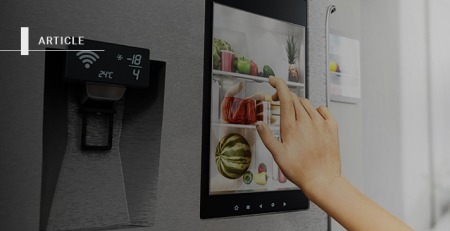How Productivity Paranoia Is Impacting the Remote Work World
During the global pandemic in 2020, switching to remote work was a frantic but necessary shift that kept many businesses afloat and allowed employees to work from the safety of their homes and care for their families.
Since then, what was supposed to be a temporary shift in workplace flexibility has now changed our outlook on remote and hybrid work completely. But is it for the better?
In 2023, nearly 13% of full-time employees reported working from home, while 29% now work a hybrid model. The trend of working off-site is projected to continue, with a staggering 32.5 million Americans expected to work remotely by 2025.
It shouldn’t come as a surprise that working remotely has become a popular perk, as many employees are more than happy to trade their rush hour commutes for more time spent with family and pets in the comfort of their homes.
The overwhelming popularity of remote work is what cannot be understated: a whopping 98% of workers reported wanting to work remotely at least sometimes.
However, it seems that not all employers are totally on board.
A recent survey from Microsoft revealed that 80% of managers are skeptical about the productivity of employees working from home. This combats the 87% of workers who felt they worked as efficiently, if not more, at home than they do in the office.
This is a huge disparity, and a problem that likely does not have an easy or straightforward solution.
The battle between in-office and remote work
With more and more companies now offering remote or hybrid work, many workers are turning to greener pastures. Since the start of the pandemic, a shocking number of employees have left their current workplace — a movement that’s been deemed “the great reshuffle.”
Whether they’re looking for more flexibility or more money, workers are ready for a change, with those born after 1997 (often referred to as Gen Z) almost twice as likely to transition to a new job.
LinkedIn found a 50% year-on-year increase in members swapping jobs, with Gen Z at a 90% increase. This might not seem too significant now, but by 2030, it’s expected that this generation will comprise 30% of the workforce.
Given their preference to job-hop rather than stick it out at one company, employers need to ensure that the benefits that they are offering will be up to the standards of this new generation if they want to retain top performers.
However, not everyone is so quick to favor new workplace trends. Elon Musk, a famously pro-office employer, has frequently stated that he views remote work as “morally wrong,” as he believes it’s unfair that some employees can work from home while others, like factory workers, must be on-site to do their jobs.
The notorious workaholic, who’s been known to sleep in his office, has remained firm in his decision that X (formerly Twitter) employees are required to work 40 hours per week in the office. The company has even turned some of its offices into bedrooms for employees who feel compelled to embrace Musk’s work style as closely as possible.
The importance of trust in the workplace
The term productivity paranoia is a concept coined to describe the lack of trust that’s developed between employers and employees in remote work environments.
Leaders are hyperfocused on the fact that they don’t trust that remote workers are truly working. This, in turn, has impacted the specific type of burnout that remote employees tend to develop when they feel like they have to be constantly available to respond to their bosses and coworkers and can never truly “clock out.”
Instead of addressing the work-life balance issue with flexible work schedules or well-established boundaries, some employers are doubling down on their productivity paranoia and investing in expensive tech to help them micromanage employees.
This tech ranges from surveillance cameras to tracking software and allows employers to keep an extra eye on their employees’ activity.
The result? A whopping 97% of leaders surveyed stated that they think productivity has increased after they started tracking their employees more closely.
However, this can be a double-edged sword: monitored employees don’t tend to feel as loyal or trusting to their managers, leading to a stressful and unsustainable work environment.
A recent study from Visier showed that employees who don’t trust their employers are more likely to leave their jobs — 35% of those surveyed said they don’t believe they’ll be in their current roles in a year.
Alternatively, nearly half of employees who trust their employers can picture themselves in their current roles for at least the next five years.
So, what is the solution?
To truly combat productivity paranoia, it’s going to take effort from both employers and employees. Bosses need to help employees feel a sense of purpose behind the work they do. It’s critical that employees feel comfortable openly communicating with their managers, especially about potential burnout.
Creating a collaborative environment where employees feel comfortable speaking up and sharing their opinions can also instill a solid agency.
Employees, on the other hand, have to find a way to separate work and home, even if the two overlap at times. They must resist the urge to always be online and establish clear timeframes where they will be responding to messages and taking meetings and when they will not.
Resources like digital calendars and online chat tools can also help employees and employers set expectations clearly on both sides.
Creating an environment with regular communication that helps employees feel empowered and encouraged in the work they do can increase trust and respect in a remote work environment.
Employees, especially those in Generation Z, long for a sense of belonging and an ability to grow alongside an organization in a way they never have before. This will be key for companies as the workforce continues to evolve in the coming years.
Content created and provided by Extu.












